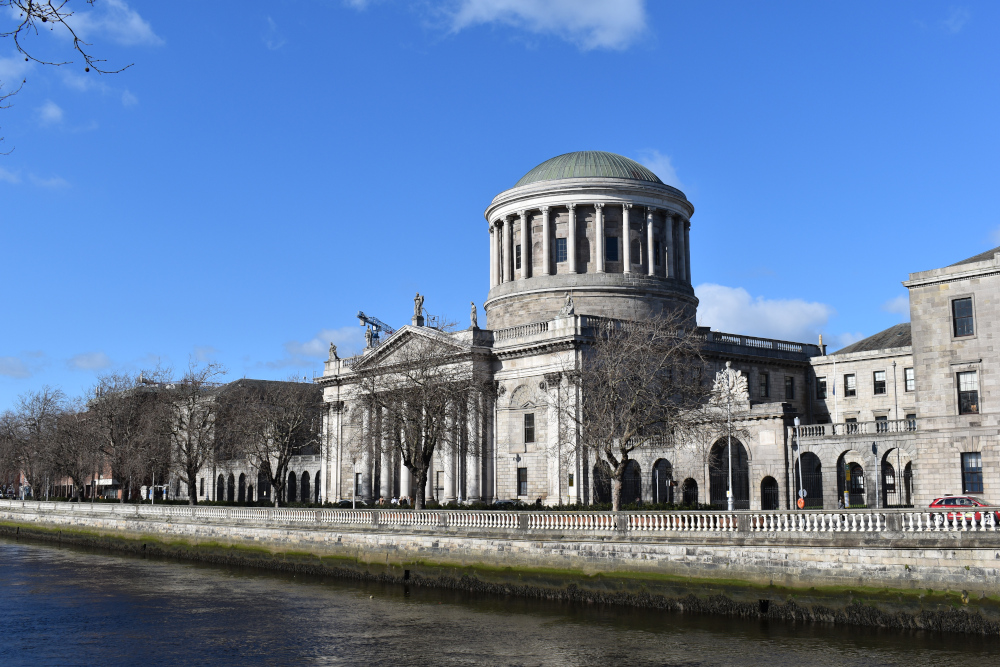Court of Appeal: Concurrent wrongdoer provisions of Civil Liability Act 1961 do not apply to debt claims

The Court of Appeal has delivered a significant ruling on the operation of the Civil Liability Act 1961 and debt claims. The court determined that two sets of defendants could not be “concurrent wrongdoers” on the basis that an action for the recovery of debt was not an action for damages within the meaning of the CLA.

About this case:
- Citation:[2022] IECA 87
- Judgment:
- Court:Court of Appeal
Delivering a joint judgment in the case, Mr Justice Maurice Collins and Mr Justice Brian held that an action by a bank of professional negligence proceedings could not be considered the same “damage” as the debt claim and, accordingly, the concurrent wrongdoer provisions of the CLA did not apply.
Although there were many other issues determined in the 127-page judgment, this report will focus on the court’s ruling on the CLA.
Background
In July 2007, Ulster Bank Ireland Limited provided a loan facility to the defendants for €21 million to fund the purchase of lands at Kilpeddar, County Wicklow. A condition precedent to the loan and mortgage was that the Bank would receive an independent report that the lands had a minimum valuation of €56 million. A valuation report from CBRE confirmed that the lands were worth €57 million.
The facility was not repaid and, in March 2013, the Bank and defendants entered into a compromise agreement. The core point of the compromise was that the total debt would be written off and the Kilpeddar lands would be sold at the best price to repay the Bank. In essence, the €25 million debt was written off for repayment of 5 million.
The compromise agreement expressed that the defendants had to disclose all assets in a statement of affairs. In the event of any breach of the agreement, all monies would become due, and the Bank was free to pursue the defendants.
In June 2013, the Bank issued professional negligence proceedings against CBRE for allegedly failing to properly value the Kilpeddar lands. This action was settled for approximately €5 million in January 2016. Further, the Kilpeddar lands were sold by the defendants for €1.5 million without the consent of the Bank. Accordingly, the Bank issued proceedings against the defendants for the full sum of the debt.
In the High Court, there were two broad issues which arose. The first issue was whether the defendants had breached the compromise agreement. The second issue was whether CBRE was a concurrent wrongdoer with the defendants due to their alleged negligence and, accordingly, whether the Bank was precluded from pursuing the defendant s for the debt under section 17(2) of the CLA.
In the High Court, it was determined that the defendants had breached the compromise agreement in a number of ways. As such, the Bank was entitled to pursue its claim for the monies against the defendants.
On the issue of the CLA, the court held that, if some defendants in a suit were alleged to be in breach of contract for failing to pay a debt, and others were responsible for that same loss on the basis of other wrongful conduct, then they were concurrent wrongdoers and the relevant provisions of the CLA applied. The court determined that the Bank’s claim against the defendants would be reduced by the amount which CBRE would have been liable to contribute to the damage suffered by the Bank, if there had been contribution between CBRE and the defendants.
In a supplemental judgment, the High Court ruled that the defendants carried the onus of proving that CBRE was negligent in order for the CLA to apply. No evidence was adduced by the defendants on this point so the judge dismissed the CLA claim.
The defendants appealed to the Court of Appeal on all matters. On the issue of concurrent wrongdoing, the Bank submitted that it was entitled to pursue the debt without regard to the role of CBRE or its blameworthiness. The defendants asserted that the trial judge was correct that CBRE was a concurrent wrongdoer and submitted that the trial judge was wrong to require the defendants to prove this fact in light of the Bank’s claim against CBRE.
Court of Appeal
As a preliminary point, the court considered whether the CLA could apply to debt claims at all. The court held that Part III of the CLA (which dealt with concurrent wrongdoing) only applied where the parties are responsible for “damage” to another party. Accordingly, the court held that it was fundamental to assess whether the non-payment of a debt could constitute “damage”.
The court outlined four key points to determining this question. First, it was noted that Part III of the CLA was solely concerned with the concept of “damages”. Second, claims for damages and claims to enforce a primary legal obligation were conceptually and practically distinct. Third, a claim for the recovery of a debt was a claim to enforce a primary contractual obligation and was therefore not a claim for “damages”. Finally, even if a claim for a debt could be construed as a claim for damages, a claim for damages for professional negligence and a claim for a debt were not actions for the “same damage” as required by the CLA.
The court went on to outline the specific provisions of the CLA which were relevant to the proceedings and identified the connection between sections 17, 34 and 35 of the CLA. It was noted that the concurrent wrongdoer provisions applied only where damages were available as a remedy and could not be applied simply because some type of loss had been caused to the plaintiff.
The court held that the CLA was “quite clear in differentiating between ‘damage’ (the term used in the definition of concurrent wrongdoer) and ‘damages’ (the trigger for the intervention of a concurrent wrongdoer in reducing an award in favour of a plaintiff)”. It was only in an action “for damages” that the concurrent wrongdoer provisions applied, the court held (see Moloney v. Liddy [2010] IEHC 218).
In contrast, the court held that an action for the recovery of a debt was not an action “for damages” and was instead an action to enforce a primary obligation under a contract. Such an action could not be “spliced or subdivided” without denying the plaintiff their legal entitlement. The court commented that there may have been some confusion in this case because money can be split and shared (see Royal Brompton Hospital v. Hammond (No. 3) [2002] 2 All ER 801). Ultimately, a plaintiff is entitled to hold a defendant to their contractual obligations irrespective of what another party has done.
Finally, the court held that, even if it was wrong that debt claims were not covered by Part III of the CLA, the Bank’s actions against the defendants and against CBRE were not actions for the “same damage”. The court emphasised that the concurrent wrongdoer provisions did not apply to “similar or related” damage, but to the exact same damage. In this case, the alleged negligence of CBRE did not release the defendants from their obligations to pay the Bank, the court said.
After reaching these conclusions, the court examined the case law on concurrent wrongdoing. It was noted that ACC Bank plc v. Malocco [2000] 3 IR 191 suggested that the concurrent wrongdoer provisions could apply to debt claims. This was “not correct,” the court said. Further, the court considered AIB v. O’Reilly [2019] IEHC 151 and again held that this decision was wrongly decided. However, this did not mean that a creditor was entitled to doubly-recover or that a compromise with one party could have no implications for another’s liability for a debt.
Turning to the evidential question in the case, the court held that the defendants were required to adduce expert evidence the CBRE was a concurrent wrongdoer in order to succeed on the CLA claim. Further, based on the compromise agreement, it was only where CBRE had a liability in excess of €5 million that any reduction could apply to the Bank’s claim against the defendants.
Conclusion
The court held that the trial judge was incorrect in his application of the CLA to the case and clarified that claims for the recovery of a debt were not claims for “damages” such that the CLA applied. However, in respect of every other aspect of the claim, the court dismissed the defendant’s appeal.
Ulster Bank Ireland Limited and Ors. v. McDonagh and Ors. [2022] IECA 87





